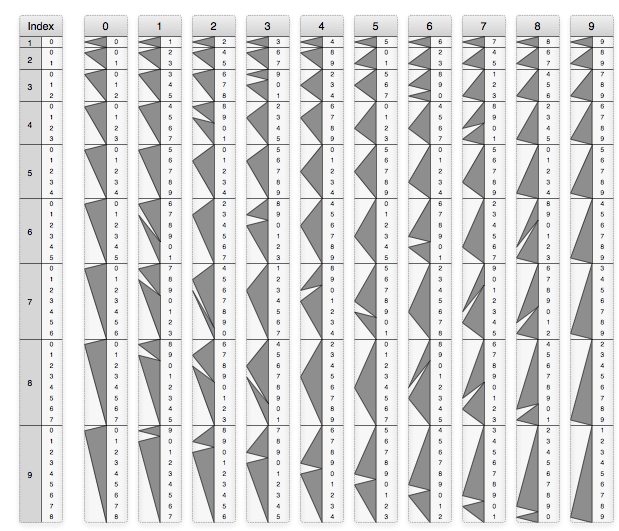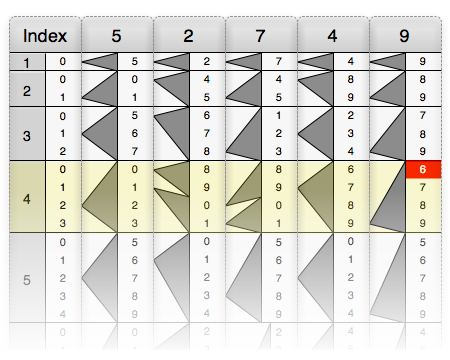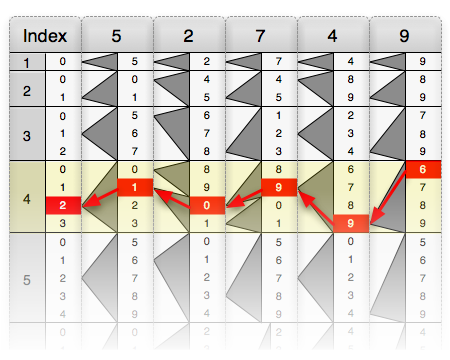
French civil engineer Henri Genaille introduced these “rulers” in 1891 as a way to perform simple multiplication problems directly, without mental calculation.
A set consists of 10 numbered rulers and an “index.” To multiply 52749 by 4, arrange rulers 5, 2, 7, 4, and 9 side by side next to the index ruler. We’re multiplying by 4, so go to the 4th row and start at the top of the rightmost column:

Now just follow the gray triangles from right to left:

The answer is 210996. “[Édouard] Lucas gave these rulers enough publicity that they became quite popular for a number of years,” writes Michael R. Williams in William Aspray’s Computing Before Computers. “Unfortunately he never lived to see their popularity grow, for he died, aged 49, shortly after Genaille’s demonstration.”
